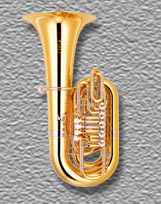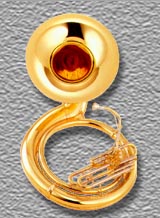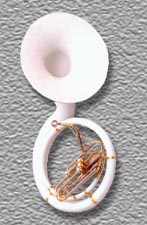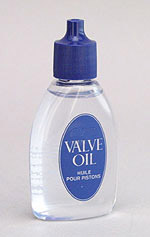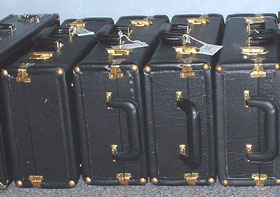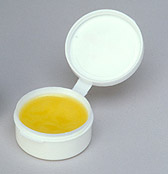 Here you see a container of
Here you see a container of
slide cream for a trombone.
|
Another type of slide which all brass instruments have is the tuning slide. This is a section of pipe which can be adjusted to tune the horn to other instruments by slightly changing the length of the entire horn. This slide of course also needs lubrication but with slide GREASE. These oils, greases, and creams can be made of a natural oil product like petrolatum or they may be made of synthetics like 





